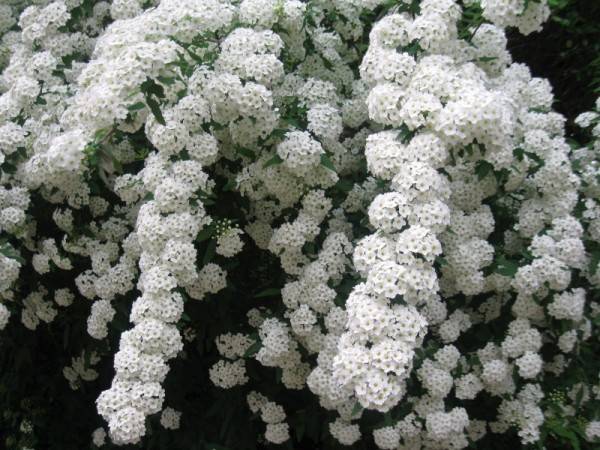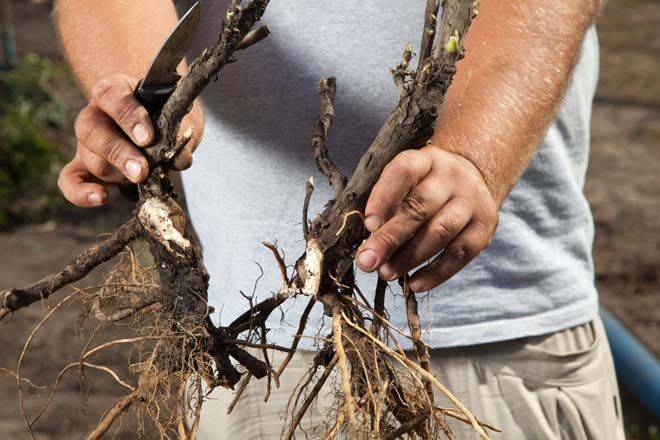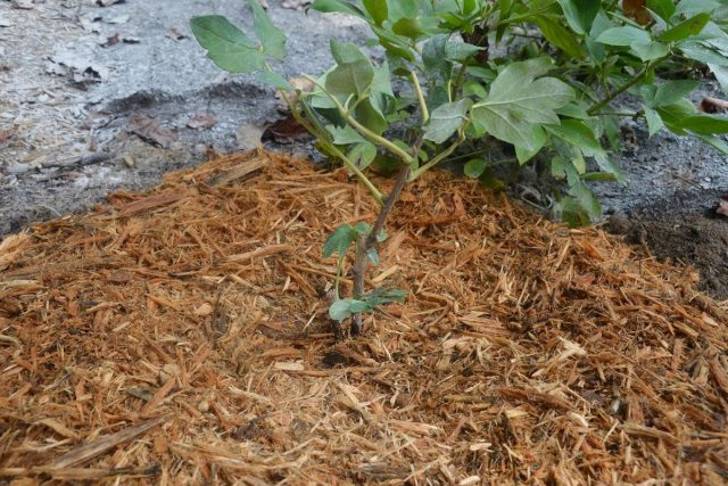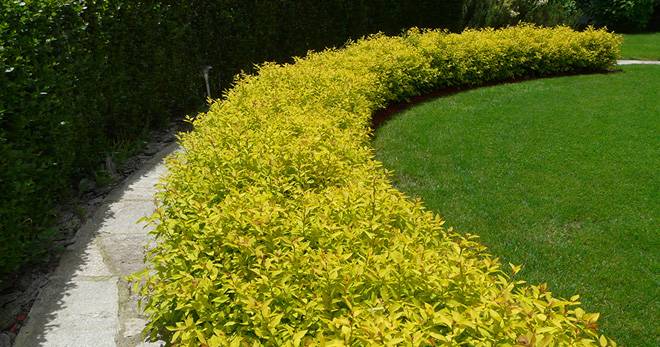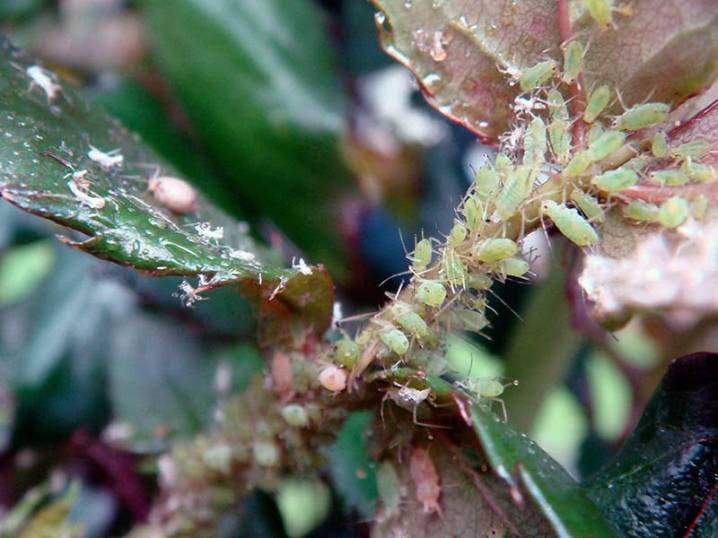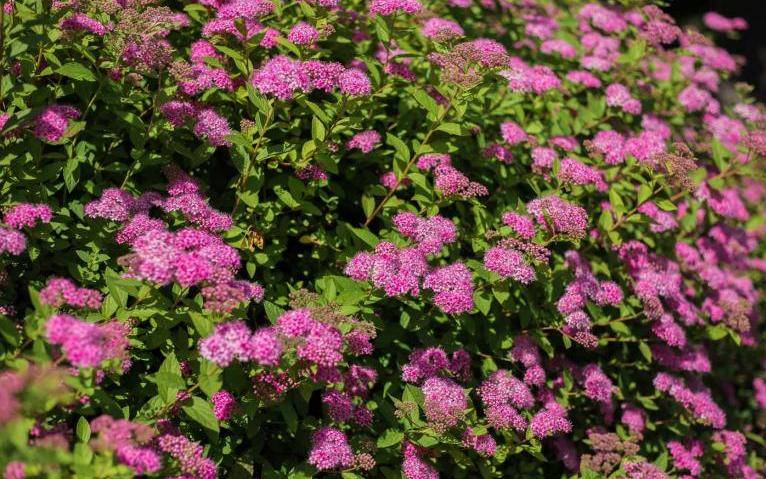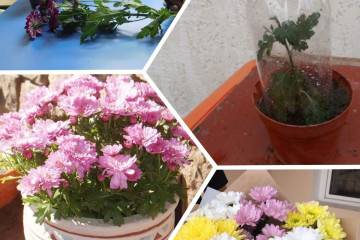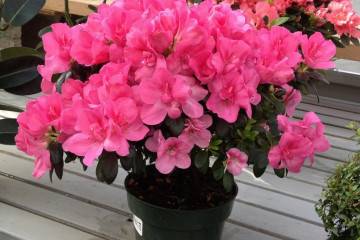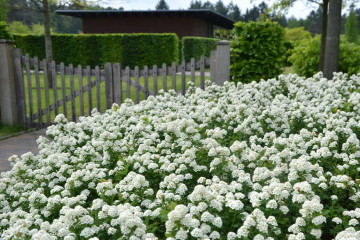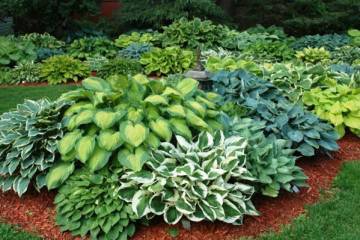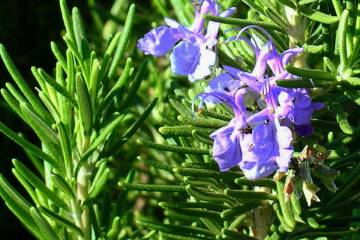How to propagate spirea and root from a twig
Content:
Spirea (meadowsweet, white bride) is an unpretentious, but quite decorative shrub of the pink family. The habitat of this plant is the foothills of the Alps, the Himalayas and the Cordilleras. Due to the huge variety of species, it is widely used in landscape design, solving a variety of garden problems.
How spirea multiplies
There are several ways to propagate this spectacular shrub. The most reliable ones that guarantee the result are:
- grafting,
- division of the root system,
- rooting of layers.
You can try growing spirea from seeds. However, you should know that, firstly, spirea seeds quickly lose their germination, and secondly, it is impossible to grow hybrid plant varieties from seeds.
Seed reproduce:
- spirea Japanese;
- spiraea of Nippon;
- spirea Wangutta;
- spirea Dubravolistnaya.
The seeds of these varieties retain up to 80-90% germination.
How to propagate spirea by seeds
The planting material is obtained in the fall, when the fruits of the plant are fully ripe. Usually, stratification is not required for the germination of spirea seeds, so planting is usually carried out in the fall. However, experienced gardeners recommend sowing seeds in the spring.
Before sowing seeds, you need to take care of the nutrient medium for them. To do this, you need to mix slightly acidic or neutral soil, vermiculite and river sand. The soil mixture is filled in a seed box, where the seeds of the plant are evenly distributed.
The box is then exposed to fresh air and covered with a garden hood. When sprouts appear, the film is removed. When the growth reaches 2-3 cm, the seeds are pricked.
Spirea care during this period is reduced to timely soil moisture. In the fall, when the soil is still well warmed up, the bushes should be planted in the ground, on a temporary bed, and left for the winter. When young shrubs reach impressive size, they can be planted in a permanent place.
Reproduction of spirea by cuttings in summer
Practice shows that the highest percentage of spirea rooting comes from twigs taken in the summer, after the end of flowering. To do this, you need to take a healthy, upright growing stem of the current year. The selection of planting material is carried out on a cloudy or rainy day.
Before you start grafting a plant, you need to prepare the ground for planting. For this, equal proportions of river sand, peat substrate and garden soil are taken.
Cuttings of spirea in summer occurs according to the following scheme:
- Cuttings about 15 cm long are harvested, on which 4 leaves should remain.
- The ends, which are supposed to be deepened into the ground, are cut obliquely.
- The cuttings are immersed in a container with a root-forming hormone for 10-12 hours.
- Immediately before planting, the oblique tip of the cutting is treated with activated carbon, wood ash or powdered root.
- The cuttings are deepened into the soil by 3-4 cm.
After planting, the seedlings need to create a greenhouse effect with a garden hood, film or glass jar. When the shoots reach a length of 3-5 cm, the plants need to be provided with fresh air.
Reproduction by dividing the bush
To propagate the spirea by division, you need to carefully dig out a healthy 3-year-old bush and cut it into 3-4 parts with a garden knife (depending on the size).
If you have to cut off several widespread root rays, you should not be afraid, since the plant calmly tolerates this procedure. This method of propagation of garden shrubs should be carried out in August or September, while the soil is well warmed up and there is time for the adaptation of the plots.
Growing spirea by layering
It is very easy to propagate the bush by layering. For this, branches are used that grow at the very base. The stem must be carefully bent to the ground, securely fixed with a garden bracket and sprinkled with soil.
When the plant grows roots, the maternal stem is excised, and a year later it is transplanted to a permanent place of growth. Spirea propagation by layering is perhaps the easiest way, suitable even for novice gardeners.
Agrotechnics for the care and cultivation of spirea
Spirea is unpretentious and can grow without any attention from the gardener. However, if you follow the simple rules of care, this shrub can become a truly royal garden decoration.
Pick-up location
Spirea is a shrub that prefers well-consecrated places. South, southwest, southeast locations are most suitable for this plant. The bush can also be planted in the shade, but in this case its growth may slow down, and the flowering will not be as intense.
Watering
It is necessary to water the shrub when it has just undergone a transplant. In addition, it is necessary to water the plant during particularly dry periods. This does not apply to Japanese spirea, which requires abundant moisture in the soil cover. Without it, she can quickly perish.
Weeding and loosening
Young, just planted, bushes require compulsory loosening and destruction of weeds in the near-root zone. These procedures will improve the air permeability of the soil and prevent excess moisture from stagnating and causing rotting of the root system.
Mulching
To maintain the required amount of moisture, the root circle of the bush must be covered with an 8-10 cm layer of mulch. The bark of coniferous trees, dry reed leaves, shells from medium-sized nuts are excellent for this.
Top dressing
Spireas usually do not need feeding. However, some gardeners do it. If it is noticed that the plant has slowed down its growth or does not bloom luxuriantly enough, then there is a wash to apply fertilizers.
Top dressing is applied twice a season. The first time was at the very beginning of spring. In this case, nitrogen fertilizers are applied to stimulate the formation of deciduous mass. The second time - just before the beginning of flowering. Potash or complex fertilizers such as "Crystal-agro" are added to the soil.
All about pruning spirea
Pruning is beneficial for pruning this plant. However, there are some nuances. Since among the varieties of spirea there are representatives that bloom both in spring and in summer, they need to be ennobled by pruning in different ways.
What is spirea pruning after flowering for?
As a rule, after flowering, those plant varieties are pruned that are distinguished by the early onset of the growing season. After the shrub has faded, dried, broken or diseased stems are removed with a sharp pruner. In addition, frozen or improperly growing shoots are cut out.
Pruning gray spirea after flowering
Spirea gray is a beautifully blooming white-flowered hybrid that was obtained by Norwegian breeders. The plant belongs to early flowering, and, due to the specific location of the inflorescences, requires a special approach to haircut.
If you stop the shrub, guided by the usual recommendations, then the decorativeness of the sulfur spirea can be significantly affected.
Thus, in order to keep the bush in a well-groomed and healthy state, you need to follow the following rules:
- It should be pruned with spirea when flowering is complete.
- Healthy branches are not cut by 2/3, but only shortened by 15-30 cm. This will allow the shrub to increase density and preserve flowering buds.
- Only shoots that have not survived the winter are completely cut out. The sanitary pruning procedure is carried out only after the flowering of the shrub is completed.
- In order to completely rejuvenate the gray spirea bush, you need to cut out all the shoots, leaving the stumps with several dormant buds.
How to properly cut spirea
The shrub is pruned at the very beginning of spring, when the first green leaves appear. Each stem is shortened into strong, healthy buds. Thin or underdeveloped young shoots are excised completely.
From the age of five, the spirea bush is usually shortened by 30-40 cm. After pruning, the bush must be watered abundantly. Some gardeners combine pruning and fertilization.
Diseases and pests
Spirea garden shrub rarely becomes the object of attacks of insect pests and common garden diseases. However, it does happen from time to time. In this case, the plant is seriously ill, and often it ends in the death of the bush.
The shrub can be affected by the following insects:
- aphid;
- spider mite;
- whitefly;
- rose leaf roll;
- meadow sawfly.
Aphid
If aphids are found, urgent action is required. The fact is that large colonies of this insect, feeding on plant sap, are capable of destroying the plant in the shortest possible time.
Spider mite
You can understand that the spider mite has chosen the bush by the white bloom, which begins to envelop the stems and leaves. Gradually, the crown of the shrub turns yellow and sheds its leaves. The complexity of the fight against this insect is due to the fertility of the tick. Therefore, we must act quickly.
First of all, it is necessary to eliminate the main condition for the existence of this insect - the aridity of the soil. It is necessary to establish the flow of a sufficient amount of moisture and regularly spray the bush. For the destruction of an insect, it is advisable to use an insecticide such as "Merkalon" or "Metaphos". Of the folk methods, soap-ash infusion will be effective.
Fungus
As a rule, spirea is resistant to fungal diseases. But a violation of the plant's agricultural technology and location next to an infected plant of another species can lead to the plant becoming ill.
The first signs of a fungal infection are browning, bloom, shrinking or curling of leaves, darkening of the stems. When these symptoms appear, you need to spray the plant with a broad-spectrum fungicide several times.
If the measures taken do not give a positive result, the plant must be removed from the soil and burned. The soil should be treated with a solution of copper sulfate. This place, if possible, should be released from planting within one and a half to two years.
Experienced gardening tips
Spirea has many fans among gardeners, and they are ready to share their experience of growing this wonderful plant:
- It is best to plant spireas, which bloom at different times. Blooming alternately, the shrubs will delight the eye all season.
- As a rule, summer-flowering pink representatives retain their decorative effect for 15 years. Then the plants gradually lose their attractiveness. This means that the bush will need to be replaced.
- It is imperative to remove faded inflorescences. Otherwise, all the forces of the shrub can go to ensure the ripening of the seeds.
- Since the roots of the bush are not located too deep, you can not be afraid of high groundwater. However, it is necessary to monitor the condition of the soil, and in especially dry seasons, provide the plant with proper moisture and do spraying with warm water.
Meadowsweet is a very common plant in landscape design. Due to its unpretentiousness and spectacular appearance, it is grown from Lisbon to Vladivostok.
